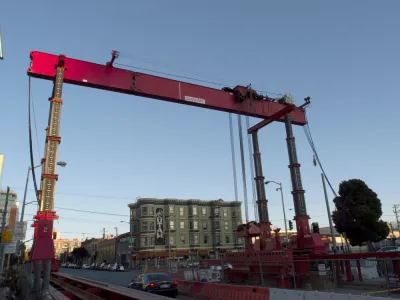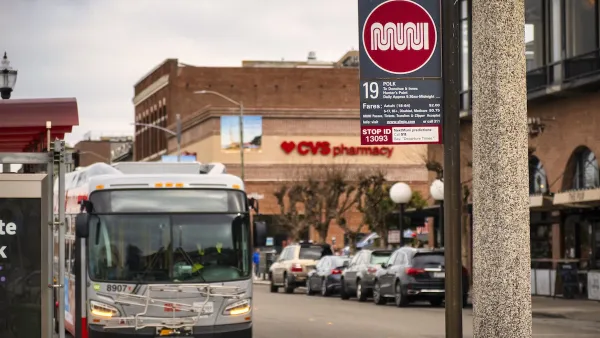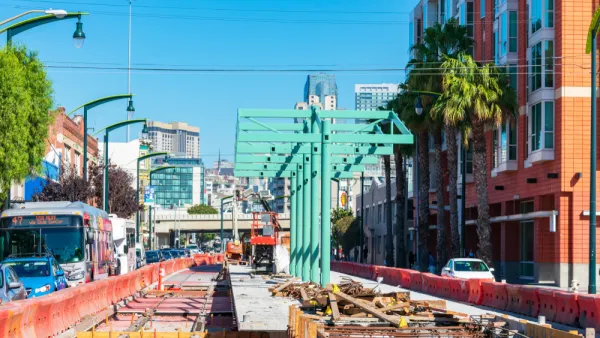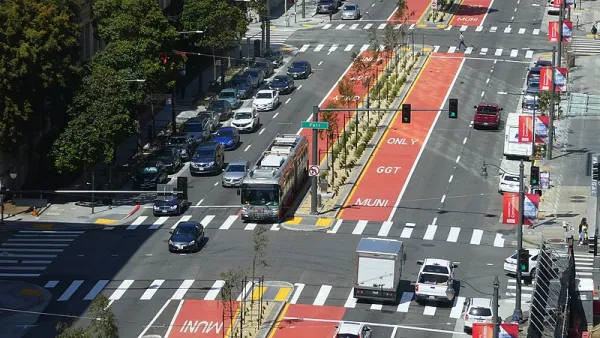Critics of the subway project argue that the line is too short and disconnected from other transit options to be useful. Meanwhile, projected costs continue to rise.

Writing in Mission Local, Joe Eskenazi criticizes San Francisco’s Central Subway, a project decades in the making that Eskenazi believes is taking valuable resources from San Francisco Muni. According to Eskenazi, “the price tag for this project has more than tripled; the final cost is now tabbed at upwards of $1.9 billion, and will all but certainly be significantly higher than that.” Yet “Muni is a system with infinite needs and finite resources. And this is how it’s spending them.”
As the article puts it, “If the Central Subway was a good and useful project, no one would remember the inveterate delays or obscene cost overruns.” However, Eskenazi argues that “it’s exceedingly difficult to overstate how poorly designed this subway line is,” pointing to early designs that failed to include air ducts (now corrected) and platforms designed to only accommodate two-car trains, the subway’s most egregious mistake, according to Eskenazi.
It’s O. Henry-like in its tragic irony: The ridership capacity that would have justified this multi-billion dollar project is now impossible to achieve. Even if people flock to take this rail line, two-car trains will quickly fill up and be overwhelmed.
“This rail line is essentially an orphan, and its failure to be a step toward establishing a true subway network represents a spectacular missed opportunity for San Francisco.” The article quotes architect and Central Subway opponent Howard Wong, who believes the agency is pouring too much money into a project that will serve relatively few riders. “If just the local matching funds for large projects were invested in the overall Muni system, San Francisco would have a more robust transit system today.”
FULL STORY: The Central Subway will cripple Muni for years to come

National Parks Layoffs Will Cause Communities to Lose Billions
Thousands of essential park workers were laid off this week, just before the busy spring break season.

Retro-silient?: America’s First “Eco-burb,” The Woodlands Turns 50
A master-planned community north of Houston offers lessons on green infrastructure and resilient design, but falls short of its founder’s lofty affordability and walkability goals.

Delivering for America Plan Will Downgrade Mail Service in at Least 49.5 Percent of Zip Codes
Republican and Democrat lawmakers criticize the plan for its disproportionate negative impact on rural communities.

Test News Post 1
This is a summary

Test News Headline 46
Test for the image on the front page.

Balancing Bombs and Butterflies: How the National Guard Protects a Rare Species
The National Guard at Fort Indiantown Gap uses GIS technology and land management strategies to balance military training with conservation efforts, ensuring the survival of the rare eastern regal fritillary butterfly.
Urban Design for Planners 1: Software Tools
This six-course series explores essential urban design concepts using open source software and equips planners with the tools they need to participate fully in the urban design process.
Planning for Universal Design
Learn the tools for implementing Universal Design in planning regulations.
EMC Planning Group, Inc.
Planetizen
Planetizen
Mpact (formerly Rail~Volution)
Great Falls Development Authority, Inc.
HUDs Office of Policy Development and Research
NYU Wagner Graduate School of Public Service





























